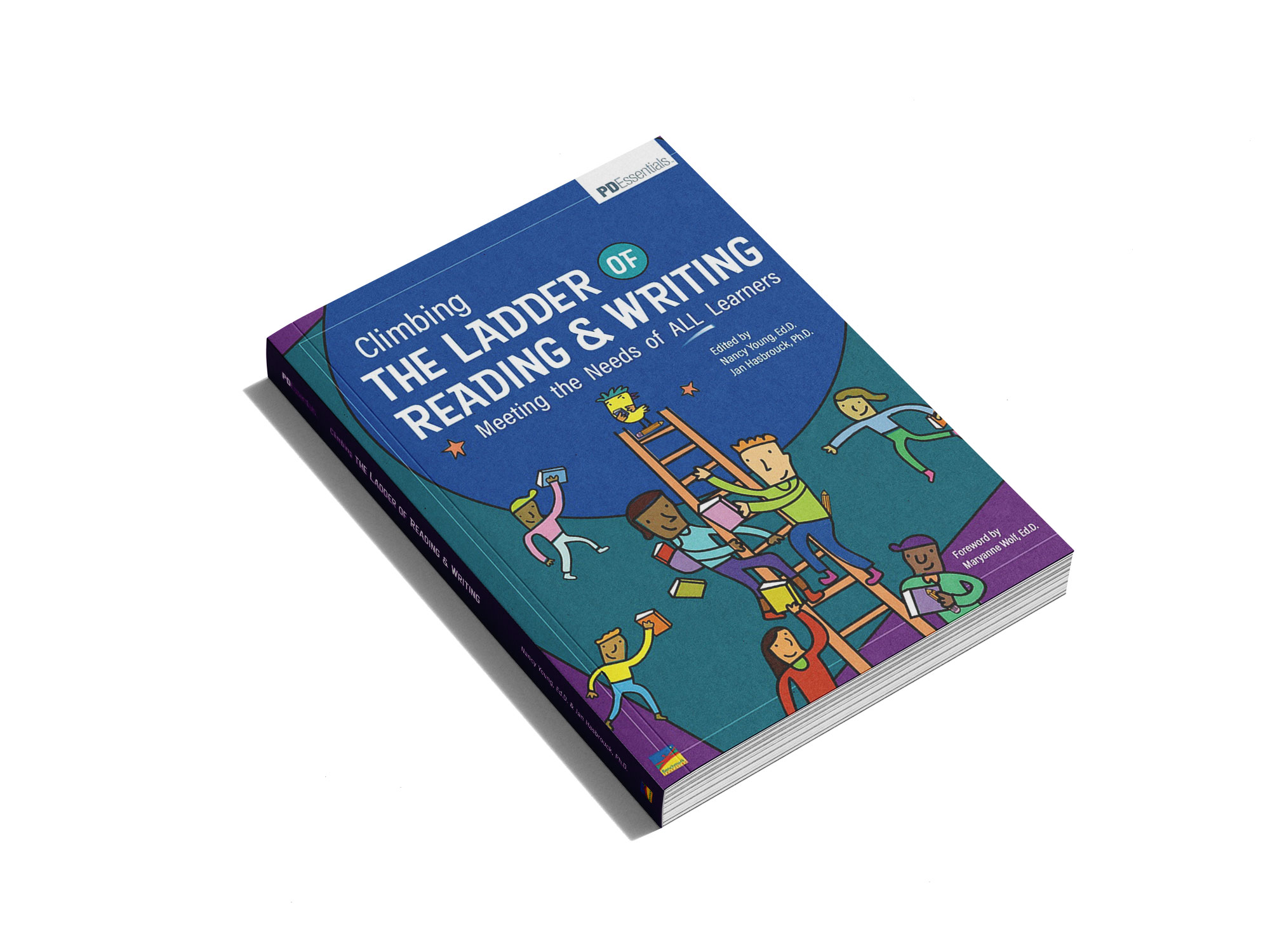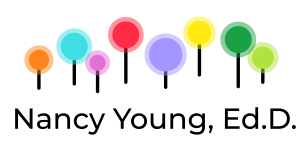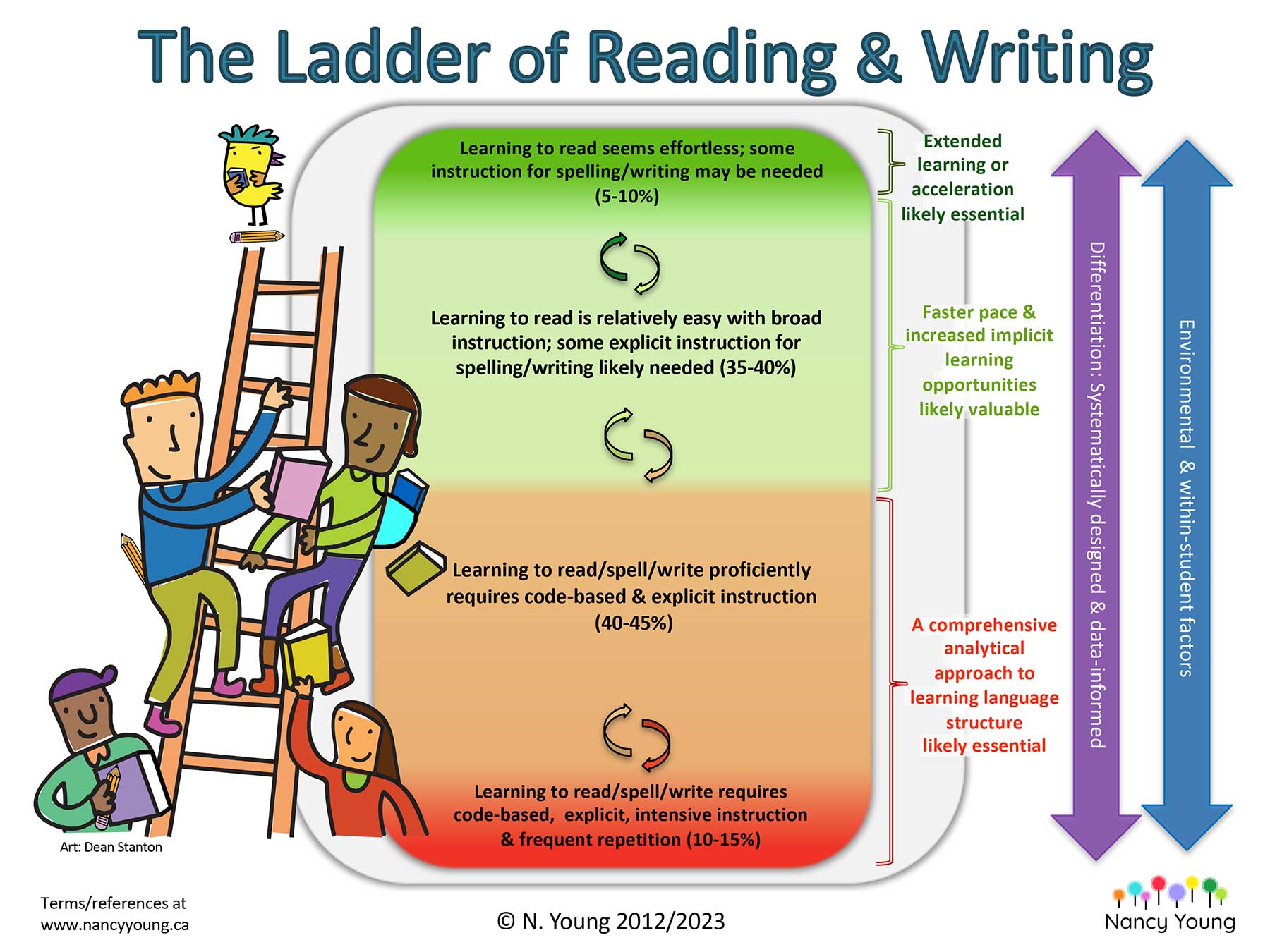Educational Consultant –
Specializing in Reading & Writing
Providing professional development for educators
“EVERY STUDENT DESERVES CLASSROOM INSTRUCTION AND SUPPORT THAT IS DIFFERENTIATED FOR THEIR INTELLECTUAL ABILITY AND ACADEMIC READINESS. ALL INSTRUCTION SHOULD RECOGNIZE INDIVIDUAL STRENGTHS, INTERESTS, AND VARYING NEEDS, AND BE PROVIDED IN WAYS THAT ARE BOTH EFFECTIVE AND FUN!”
“EVERY STUDENT HAS THE RIGHT TO APPROPRIATE INSTRUCTION WHEREVER THEY ARE ON THE CONTINUUM OF EASE IN MASTERING LITERACY SKILLS.”

The highly acclaimed book
co-edited by Nancy Young, Ed. D.
and Jan Hasbrouck, Ph.D.
Climbing THE LADDER OF READING & WRITING
Meeting the Needs of ALL Learners
The widely lauded infographic:
The Ladder of Reading & Writing
Sign Up for my newsletter
* We do not sell or distribute your personal information.

